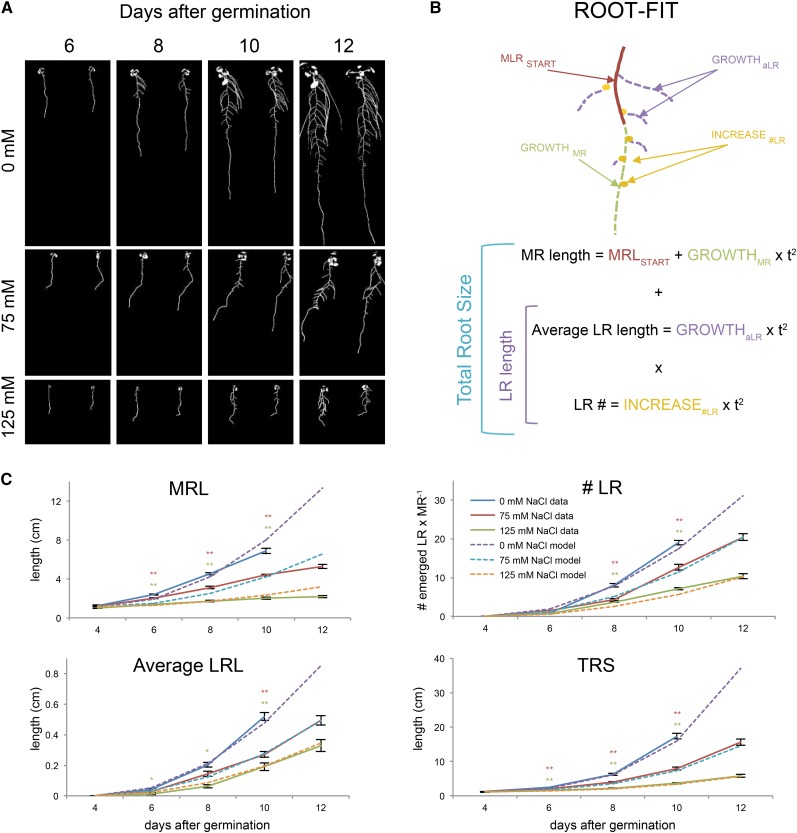Figure 2.
Quadratic growth functions used for description of RSA growth dynamics. Four-day-old seedlings of Col-0 were transferred to media supplemented with 0, 75, or 125 mm NaCl. A, RSA of seedlings was quantified every 2 d between 4 and 12 d after germination. B, TRS is defined by the combination of MRL, aLRL, and number of emerged LRs. MRL of 4-d-old seedlings is the starting point (MRSTART) and the growth of the MR was expressed as growthMR by fitting a quadratic function on the observed MR growth. A similar approach was used to calculate the increase in number of emerged LRs and aLRL (increase#LR and growthaLR, respectively). The models describing individual RSA parameters were combined for describing cumulative LRL by multiplying number of LRs with aLRL. TRS was calculated from individual parameters by adding MRL to cumulative LRL. C, The descriptive quadratic growth models for individual parameters (dashed lines) were compared with the observed growth rates (filled lines) at growth conditions for MRL, number of emerged LRs (# LR), aLRL, and TRS. The individual data points for observed growth represent the average value of 24 replicates. Error bars represent the se. The r2 values for goodness of fit are provided in Supplemental Table S2. The effect of salt stress was defined as significant when the RSA trait value in salt stress conditions was significantly different from control conditions when tested with Tukey’s post hoc test, with significance of 0.05 (single asterisk) or 0.01 (double asterisks). The significant differences are indicated with asterisks in colors corresponding to those of the salt stress treatments.

